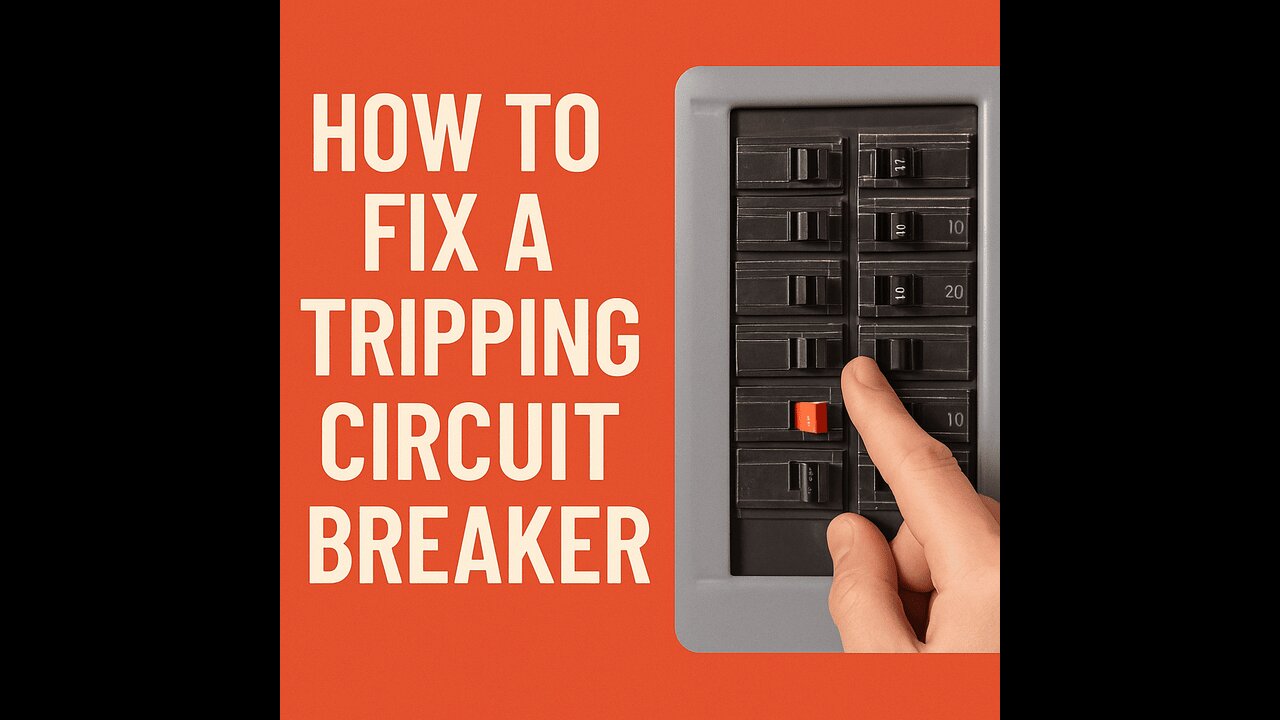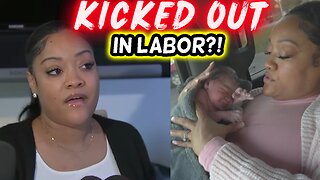Premium Only Content

How to Fix a Tripping Circuit Breaker – Step-by-Step Guide
How to Fix a Tripping Circuit Breaker – Step-by-Step Guide
A tripping circuit breaker is a sign that something isn’t right in your electrical system. It’s designed to protect your home from hazards like electrical overloads, short circuits, or ground faults. Here’s how you can troubleshoot and fix the issue safely:
Before You Begin: Safety First!
Turn off all appliances in the affected area.
Wear rubber-soled shoes and ensure your hands are dry.
Never touch wires directly unless you're qualified to do so.
Step-by-Step Instructions:
1. Identify the Tripped Breaker
Open your electrical panel (usually a gray metal box in a garage, basement, or closet).
Look for the breaker switch that is in the middle position (not fully ON or OFF).
It may also show a red or orange indicator.
Why this matters: Locating the specific tripped breaker helps narrow down which circuit (room or area) has the problem.
2. Reset the Breaker
Move the tripped breaker to the OFF position first.
Then switch it firmly back to the ON position.
Tip: If it trips again immediately, move on to the next steps — you likely have an underlying issue.
3. Unplug All Devices on the Circuit
Go to the area the breaker controls and unplug everything: lamps, TVs, appliances, etc.
Why: A single faulty device can cause the circuit to trip.
4. Inspect for Overload
Check if you had too many high-power devices (like a heater, microwave, or hair dryer) plugged in at once.
Try plugging in and testing one device at a time to find the culprit.
Solution: Spread high-wattage appliances across different circuits to prevent overloads.
5. Check for Short Circuits or Damaged Wiring
Look for signs of:
Burn marks on outlets or plugs
A burning smell
Frayed or damaged cords
Warning: If you suspect wiring issues or a short circuit, call an electrician. Do not attempt DIY fixes unless you’re trained.
6. Test the Breaker Itself
If you've unplugged everything and it still trips, the breaker might be faulty.
Replacing a circuit breaker should only be done by a licensed electrician.
7. Call a Professional (If Needed)
If you've followed all steps and the problem persists, it could be:
Faulty wiring inside the walls
A failing breaker
Ground fault issues
Don’t risk it — call a licensed electrician for inspection and repair.
🧯 Final Tips:
Don’t ignore repeated tripping — it’s a safety warning.
Avoid using extension cords excessively — they can cause overloads.
Consider upgrading your panel if your home is older and you're adding new devices.
#CircuitBreaker, #ElectricalSafety,#HomeMaintenance,#BreakerTripping,#ElectricalTips
-
 LIVE
LIVE
Viss
4 hours ago🔴LIVE - Completing Quests & Annihilating All in Our Path! - Arc Raiders!
79 watching -
 53:51
53:51
The Rubin Report
3 hours agoBill Maher Obliterates Patton Oswalt’s Liberal Bubble in Only 2 Minutes
37.5K42 -
 LIVE
LIVE
LumpyPotatoX2
3 hours agoWhere Winds Meet: Just Petting Kitties - Made in China
59 watching -
 LIVE
LIVE
ReAnimateHer
18 hours ago $0.12 earnedTwisted Tales & True Crime - Inbred Byrd Sisters & Graysone Homestead
109 watching -
 1:08:01
1:08:01
iCkEdMeL
2 hours ago $1.06 earned🚨Mom Gives Birth on Highway After Kicked Out of Hospital?!
17.3K1 -
 14:28
14:28
Clownfish TV
4 hours agoDisney is DONE with DEI?! | Clownfish TV
9.17K9 -
 LIVE
LIVE
LFA TV
16 hours agoLIVE & BREAKING NEWS! | TUESDAY 11/18/25
2,652 watching -
 LIVE
LIVE
The Shannon Joy Show
2 hours agoLicense To Kill - The PREP Act, BARDA & How The US Government Legalized Democide. LIVE With Sasha Latypova
285 watching -
 32:16
32:16
Grant Stinchfield
2 hours ago $1.23 earnedAI Sam Altman’s Baby Lab: Silicon Valley Tries to Play God!
9.72K1 -
 1:00:48
1:00:48
VINCE
5 hours agoHere Come The Epstein Files | Episode 171 - 11/18/25 VINCE
229K125